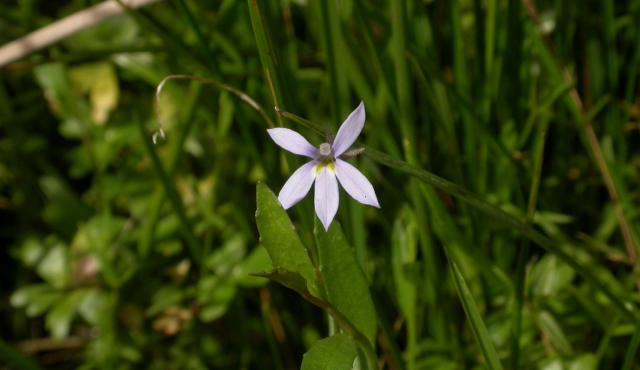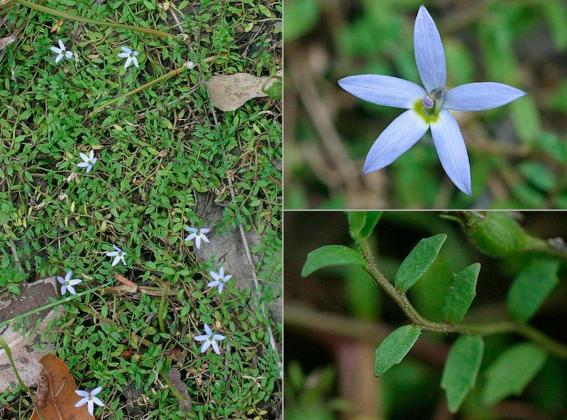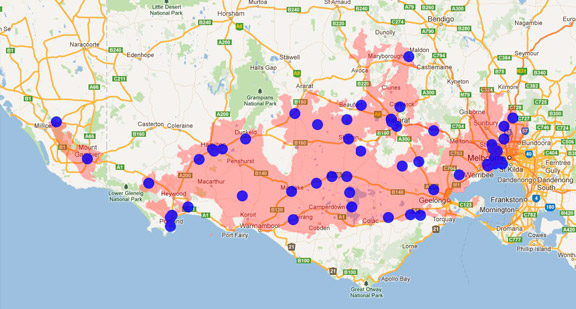A range of teacher professional learning programs will be developed to accompany the Biodiversity of the Western Volcanic Plains online outreach...


Poison Lobelia
Lobelia pratioides
Perennial. Forms roots at leaf nodes to grow as loose mats. Occurs in seasonally waterlogged soils along the edges of swamps and drainage lines. Each plant has separate male or female flowers.
| Details | Description |
| Type | Herb |
| Group | Bluebell |
| Identifying Characteristics | |
| Distinctive Features | Sometimes has stems which zig zag. Young growth hairy. |
| Life Form Group | Herb |
| Life Form Codes | Small or Prostrate Herb (SH) |
| EVC types | EVC 125: Plains Grassy Wetland EVC 132_61: Heavier-soils Plains Grassland EVC 132_62: Lighter-soils Plains Grassland |
| Native Status | Native to Australia |
| Taxonomy | |
| Phylum | Charophyta |
| Class | Equisetopsida |
| Order | Asterales |
| Family | Campanulaceae |
| Genus | Lobelia |
| Species | pratioides |

Distribution maps indicate current and historic locations where species have been sighted.
Source: Atlas of Living Australia
| Endangered Status | |
| DEPI Advisory List | Not listed |
| FFG Act | Not listed |
| EPBC Act | Not listed |
The conservation status of species is listed within Victoria and Australia.
The Department of Environment and Primary Industry (DEPI) Advisory List consists of non-statutory advisory lists of rare or threatened flora and fauna within Victoria.
The Flora and Fauna Guarantee Act 1988 (FFG Act) lists threatened species in Victoria. Under the Act, an Action Statement is produced for each listed species.
The Environment Protection and Biodiversity Conservation Act 1999 (EPBC Act) is the Australian Government’s key piece of environmental legislation, listing nationally threatened native species and ecological communities.



